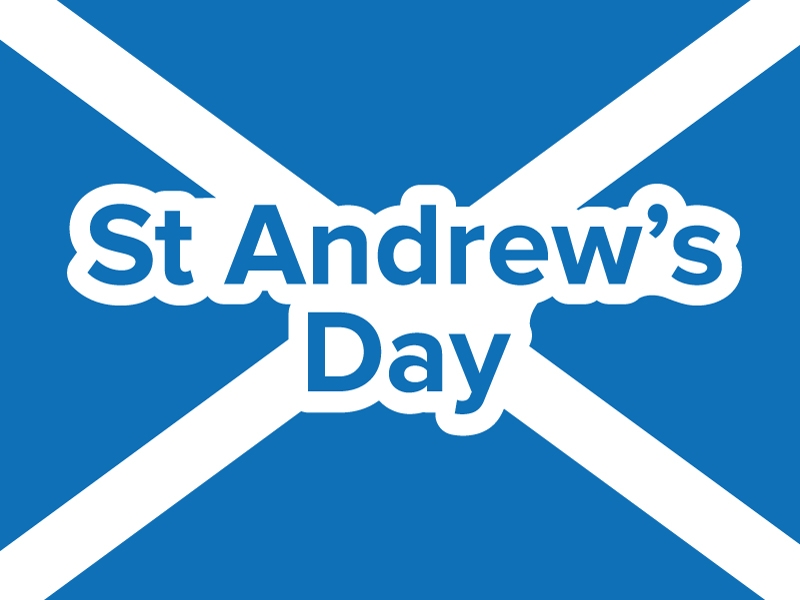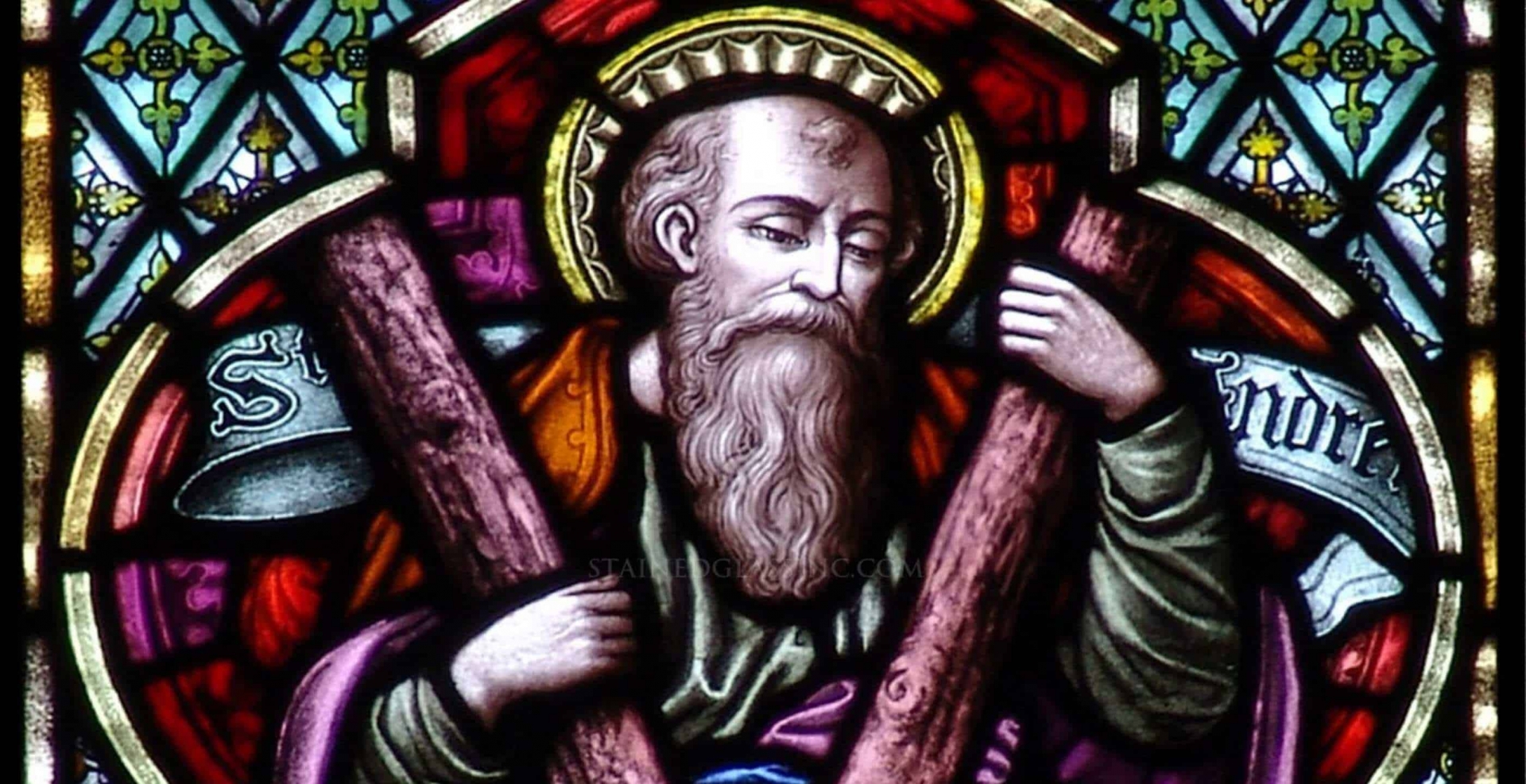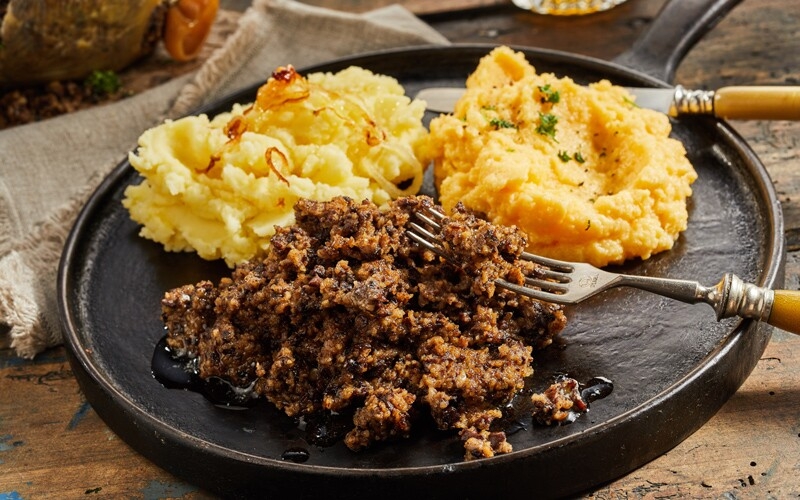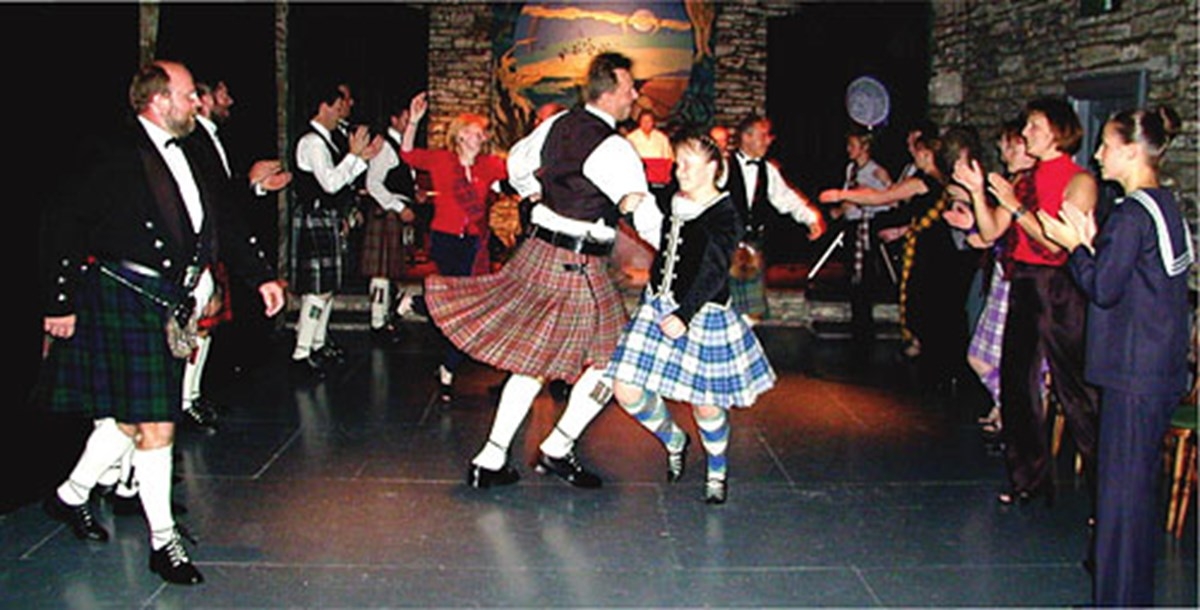St. Andrew's Day: Who is, History, Celebration
 |
| St, Andrew's Day. Photo: LotRO |
Celebrating is something Scots do really well, and if there is one day of the year where you'll hear a lot of noise, it's St Andrew's Day. Scots and Scots-at-heart come together to celebrate the patron saint of Scotland and this national day with a holiday and fantastic events, which showcase the very best of Scottish culture.
History of St. Andrew's Day
Quite simply, St. Andrew, an apostle of Jesus, is the patron saint of Scotland. Thus, Scots have celebrated Andrew for over a thousand years, with feasts being held in his honor as far back as the year 1000 AD. However, it wasn’t until 1320, when Scotland declared independence, that he officially became Scotland’s patron saint. Since then Andrew has become part of the country. The flag of Scotland, the St Andrew’s Cross, was chosen in his honor. Also, the ancient town of St Andrews was named due to its claim of being his final resting place.
Who is Saint Andrew?
Known as Andrew of Apostle, Saint Andrew is believed to have been born in Galilee, Israel in between 5 AD and 10 AD while it was under the domain of the Roman Empire.
According to the Bible’s New Testament, Andrew and his brother Simon Peter (Saint Peter) worked as fishermen before receiving a call from Jesus to become two of his 12 apostles or disciples.
The Gospel according to John cites Andrew as having been initially called as a disciple of John the Baptist before he joined Jesus.
Andrew features among many of the New Testament tales and scriptures about Jesus and his disciples as one of the most significant apostles following Jesus and embarking on missions.
Andrew’s crucifixion on an X-shaped diagonal cross is where the Saltire cross, otherwise known as Saint Andrew’s Cross, originates – with his death at the hands of the Romans occurring in Greece on the supposed date of 30 November, 60 AD.
It is thought that this symbol of Saint Andrew’s martyrdom was not fully established until the Middle Ages.
 |
| Photo: Historic UK |
What happened to Saint Andrew’s bones?With Saint Andrew himself is widely known to have never been in Scotland – at least not alive – his remains were likely to have been buried in Patras following his death and remained there until 357 AD. The Voyage of St Rule legend claims that St Rule fled Greece with the bones of Saint Andrew after Emperor Constantine of Constantinople ordered their removal to Constantinople and brought them to safety in Kilrymont. But St Mary’s Catholic Cathedral in Edinburgh, where Saint Andrew’s relics are held today, states on its website that it is more likely the case that Patras took the bones of Saint Andrew to St Augustine Diocese in Hexham, England. From here, the bones of Saint Andrew are believed to have been brought to Scotland by Bishop Acca, who fled to Scotland for asylum with King Angus and the Picts, in 732 AD. The Duomo di Sant'Andrea in Amalfi, Italy and Basilica of St Andrew in Patras, Greece hold other relics of the Scottish, Russian, Polish and Greek patron saint, with countries across the world celebrating him and his legend through St Andrews Societies. |
Why is he so important to Scotland?
The New Testament refers to Andrew as being with Jesus on some very momentous occasions. For example, Andrew told Jesus about the boy with the loaves and fishes, and when Philip wanted to tell Jesus about certain Greeks seeking Him, he told Andrew first. Andrew was present at the Last Supper; he was also one of the four disciples who came to Jesus on the Mount of Olives to ask about the signs of Jesus’ return at the “end of the age.”
Oddly enough — America plays a role in St. Andrew’s Day. A group of wealthy Scottish immigrants created the “St Andrew’s Society of Charleston” in South Carolina back in 1729. The organization’s actually the oldest Scottish society of its type in the world. It became famous throughout the region for assisting orphans and widows. Also, “The St Andrew’s Society of the State of New York” is the oldest charity of any kind registered in the state. Local Scotsmen, who were looking to help the poor and distressed, founded the group in 1756. From there, St Andrew’s societies have spread around the world.
St Andrew’s Day now ranks as one of three major dates during the winter period. Starting off Scotland’s Winter Festival each year on November 30, people across the country gather together to celebrate Andrew and share good times. The day is usually marked with a celebration of Scottish culture, including dancing, music, food, and drink, with parties going on until the early morning hours.
Why Does Scotland Celebrate St. Andrew’s Day?
 |
| Photo: Culture Trip |
According to legend, Óengus II, king of Picts and Scots, led an army against the Angles, a Germanic people that invaded Britain. The Scots were heavily outnumbered, and Óengus prayed the night before battle, vowing to name St. Andrew the patron saint of Scotland if they won.
On the day of the battle, white clouds formed an X in the sky. The clouds were thought to represent the X-shaped cross where St.Andrew was crucified. The troops were inspired by the apparent divine intervention, and they came out victorious despite overwhelming odds.
True to his word, as the legend goes, Óengus named St. Andrew the patron saint of Scotland, and St. Andrew’s Day marked Scotland’s victory and new nationhood. Scotland’s flag, a white cross over a blue background, is also likely the result of this legend and has been named St. Andrew’s Cross.
How to celebrate St. Andrew’s Day?
Scots and others celebrate traditional Scottish culture on St. Andrew’s Day with Scottish food, music, recitations, dancing,and more. The day isn’t as widely celebrated in Scotland as some other holidays, such as St. Patrick’s Day, but it is a grand celebration nonetheless.Some towns, such as St. Andrews, even throw weeklong celebrations.
St. Andrew’s Day also marks the beginning of winter festivals such as Hogmanay and Burns Night.
St. Andrew’s Day Food
 |
| Photo: Family Search |
Scotland's food and drink plays a big part on St Andrew's Day. For starters, the traditional soup dish cullen skink is often served; made of smoked haddock, potatoes and onions. When it comes to the main course, there can only one dish to celebrate Scotland's patron saint, haggis, neeps (turnip), and tatties (mashed potato). Dessert is a dish best served hot especially on cold winter nights, round off your feast with clootie dumpling and custard. A traditional Scottish dessert made of dried fruit, spices, oatmeal or breadcrumbs, flour, and beef suet. The word 'clootie' derives from the Old Scots word 'cloth' where the dumpling was traditionally boiled.
St. Andrew’s Day Music
Ceilidh (pronounced “kay-lee”), coming from the Gaelic word meaning “to party” or “to visit,” is a traditional Scottish country dance that’s all about fun. These events, often held on St. Andrews Day, involve Scottish folk music mixed with modern pop music, dancing, and storytelling. As an added touch of flair, people often wear the traditional iconic kilt. Who would miss this lively event?
Have you celebrated St. Andrew's Day? Let us know in the comments below how you have celebrated this holiday, or record your stories in FamilySearch Memories to share with the rest of your family.
How to observe St. Andrew's Day
Throw your own St. Andrew's feast
Gather your friends and feast on haggis, porridge, black pudding (ok, maybe leave that one out), and whiskey! While you're at it, create some fun trivia about St. Andrew himself. Did you know he was a fisherman as well?
Wear a kilt
While it may not be a national holiday in America, we all can be Scots at heart. To celebrate St. Andrew's Day, wear a kilt, paint your face with a traditional blue saltire (better known as Scotland's flag), and call it a day!
Visit the town of St Andrews
If you're like us, then you're ready to book a one-way ticket to Scotland after learning how much fun it is to celebrate St. Andrew's Day. From November 30 to December 3, you can find the Scots celebrating across Europe, but it gets no better than in the town of St. Andrews itself, thanks to rolling landscapes, history, and tradition.
5 odd St. Andrew’s Eve traditions you won't believe
 |
| Photo: Celtic Castles |
Hiding grains to get a husband
In Romania it is tradition for young women to place 41 grains underneath their pillow, and if they dream their grains are stolen, then it's believed they will find a husband within the year.
How to guess your future husband's occupation
In Poland husbandless women believe they are able to predict their future husband's occupation by pouring hot wax through a keyhole into water — the wax forming to resemble the shape of their occupation.
The way to a man's heart is through food
In Slovakia young women write down the names of potential husbands on pieces of paper, kneading them into dough and baking; the first name to rise to the top of the bread will be their husband.
A curious way to get a girl's attention
In Moldova young men steal and hide gates or doors from the homes of the young women they wish to marry. In the morning the fathers' are tasked with finding their gates, thus knowing their daughter has a suitor.
One foot out of the door
In Austria young women throw a shoe over their shoulder; if it lands pointing towards the door they will be married within the year.
Is St. Andrew’s Day a public holiday?Yes. In 2006, the Scottish Parliament declared St Andrew's Day a bank holiday. Although it is not law, most Scottish employers are left to decide whether to give their staff a day off and close for the day. If the 30 November falls on the weekend, staff are given the Friday or Monday off work. |
 What Holidays is the U.S Stock Market Closed 2022? What Holidays is the U.S Stock Market Closed 2022? The US stock market closes on some US holidays every year. Scroll down to know more about the holiday time, holiday schedules of the US ... |
 What Time Does the US Stock Market Open and Close? What Time Does the US Stock Market Open and Close? When does the US stock market (NYSE, Dow Jones, Nasdaq,...) open or close? Check out the opening & closing hours, break, holidays and more. |
 What Time Does Chinese Stock Market Open and Close? What Time Does Chinese Stock Market Open and Close? What Time Do Shanghai, Hong Kong and Shenzen Stock Exchange Markets Open and Close? Let's find the answers in the article below! |


























